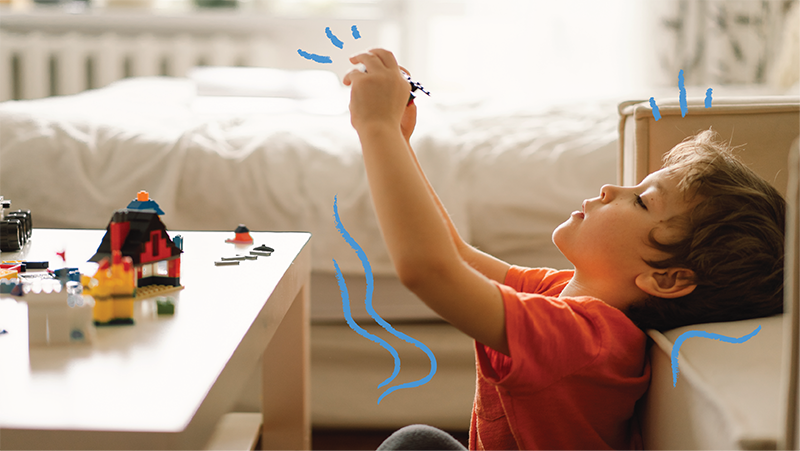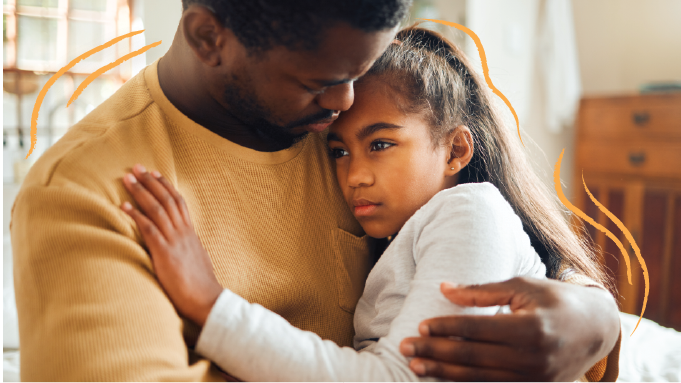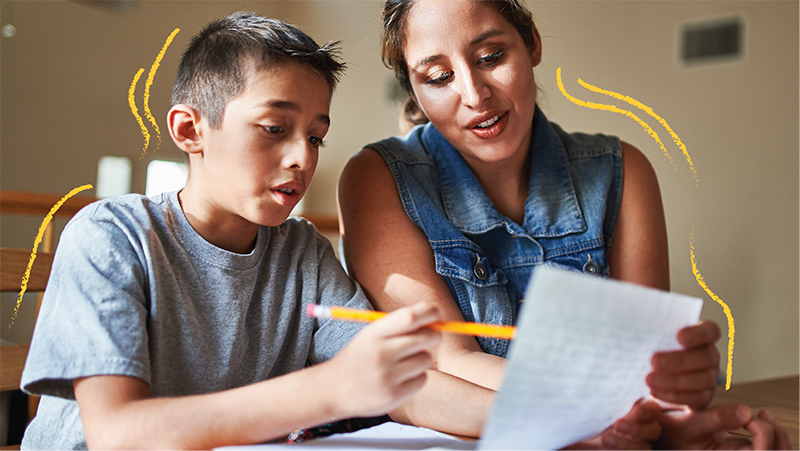
For every child, toys have a universal purpose––play. While it may seem like some toys are more valuable than others, it really depends on your approach; learning toys may offer more opportunity to expand the horizons of your child’s academic ability, but toys that engage the imagination or provide a joyful adventure are just as important. Although it’s true that autistic children have special needs, the objective of toys remains the same: to bring joy, to inspire imagination, to stimulate the senses, and to evoke a sense of curiosity and wonder. Playing is learning, and it’s all valuable.
Toys for Autistic Children
There are no “wrong” or “right” toys for children with autism spectrum disorder (ASD); however, there are toys that are uniquely positioned to pique their specific interests or encourage them to develop skills that require practice. For instance, toys that demonstrate cause and effect, target sensory needs, help with social skills, or challenge your child to work on fine motor skills, such as hand-eye coordination, or gross motor skills all have benefits for autistic kids. They accomplish more than just the simple diversion of play.
Take a look at the following suggestions for the best toys to help kids who have autism:
Sensory Toys
Children with autism often have a sensory processing disorder (SPD) that affects how they process sounds, sights, smells, taste, touch, and physical sensation. Providing a variety of sensory stimulation in a fun and controlled way can help them acclimate to sensory input. Consider the following options for toys that emphasize sensory integration:
Kinetic Sand. This unique sand comes in bright colors and can be squished, shaped, cut, mixed, and molded for open-ended play that promotes curiosity, imagination, and an unusual tactile experience.
Dimpl. The Dimpl by Fat Brain Toys is marketed as a baby toy but offers calming sensory input that appeals to older children with autism as well. With colorful silicon bubbles that make a satisfying sound and sensation when “popped,” the Dimpl is a soothing distraction.
Playfoam. Playfoam by Educational Insights can be squished, shaped, and sculpted into a variety of creative projects. It is non-toxic, never dries out, and is mess-free, making it appealing to parents as well. It also comes with a handy guide of suggestions for play.
Jelly Belly Scented Bubbles. There’s simple magic in blowing bubbles, and Jelly Belly Scented Bubbles combines the fun experience of blowing and popping bubbles with the sensory addition of fruity scents.
Abilitations Teacher’s Pet Weighted Lap Dog. Weighted items can help provide sensory input and stability in a way that calms children with autism, and this three and a half pound stuffed animal is a soft and solid companion to read to or snuggle.
Calming Toys
Children with autism often experience challenges with focus, impulse control, or patience. Calming toys can provide an outlet for redirecting attention that can help indulge those antsy feelings in a manageable way. Here are a handful of calming toys that may work for your child:
Chubuddy pendants. Children with sensory issues often like to chew on items. Keep this habit safe and more sanitary with pendants, tubes, or bracelets made of food and medical grade substances that kids can chew on throughout the day .
ATiC 12-sided fidget cube. Ease fidgeting by keeping busy fingers occupied with a fidget cube. With 12 different sensory options and actions, the ATiC 12-sided fidget cube helps relieve stress and reduce anxiety.
Adorox Liquid Bubble Drop Motion Wheel. This mesmerizing handheld toy allows you to create a calming display of colorful bubbles dropping through clear liquid. Help your child regain focus by taking a few moments to observe the movement of droplets.
Zaxideel Fidget Pop Tubes. Your child can pull, bend, snap, connect, and pop these simple plastic accordion-like tubes to improve fine motor skills and manage sensory input.
Stress ball or stretchy toys. Sometimes simple, tactile motion can help entertain a busy mind. Squishy stress balls or stretchy toys are a very portable option for quiet, calming play in public.
Motor Skills Toys
Fine-tuning motor skills is essential for children of all ages and abilities, but particularly for children with autism spectrum disorder. From fine motor skills, such as tasks involving hand eye coordination and grasping small objects, to gross motor skills, which involve whole body movements such as riding a bike or walking on a balance beam, the right toys can create a stronger sense of physical awareness.
Lego. These classic building blocks are an ideal source of fun for people of all ages––yes, even those who are grownups by age but kids at heart. From elaborate creative builds to simple sorting, stacking, color-coding, or counting, there’s a ton of educational opportunity in playing with Lego.
Puzzles. Puzzles are the perfect mix of fine motor skills and problem solving. Melissa & Doug make a series of sound puzzles which reward correct matches with a corresponding sound, in different themes including animals or transportation. The addition of sensory input makes these educational puzzles particularly valuable as an autism toy.
Gonge Riverstones. Create your own obstacle course or allow your child to engage in imaginary play with these durable, colorful stepping stones. Encourage hopping from one to another to practice balancing, improve agility, and to develop gross motor skills.
Trampoline. Burn off energy and improve muscle tone, coordination, and physical fitness with the good old-fashioned fun that jumping on a trampoline offers. Honestly, trampolines are fun for pretty much everyone, regardless of age or ability, so you can’t go wrong with this gross motor skill-building activity.
Social Interaction Toys
Whether it’s routine shyness or difficulty with social cues, watching your child struggle to fit in can be painful. Help your autistic child develop social skills with the following toys.
Board games. Board games are a fun way to teach your child the importance of turn taking. Choose a board game that is appropriate for your child’s age range and attention span (Perhaps they need something shorter than Monopoly?) and work on good sportsmanship, patience, and following the rules, with the added benefit of a little friendly competition.
Puppets. Playing with puppets introduces the opportunity to act out different scenarios in a way that can be helpful for practicing conversational skills. Join your child in a little low-pressure improvisation to help them pick up on social cues and guide them towards engaging in appropriate dialog.
Play kitchen. Any toy that allows your child to engage in pretend play that mimics real life is extremely helpful to their real world experience. Something like a play kitchen encourages practice in a house or restaurant scenario while allowing them to expand their imagination and explore.
Playful conversation cards. Mightier’s Conversation Card series uses playful talking and activity prompts to help kids explore emotions, build social awareness and communication skills, and practice calming and social skills. They’re meant to be played as a family, so that caregivers learn right alongside their kids.
Play is important, and while you don’t need specific toys for children with autism, toys can become teaching tools when chosen thoughtfully. Encourage imagination, provide a safe and supportive play space, and get involved when possible. An open mind, gentle guidance, and parental enthusiasm can be more valuable than even the most sophisticated toy.

















